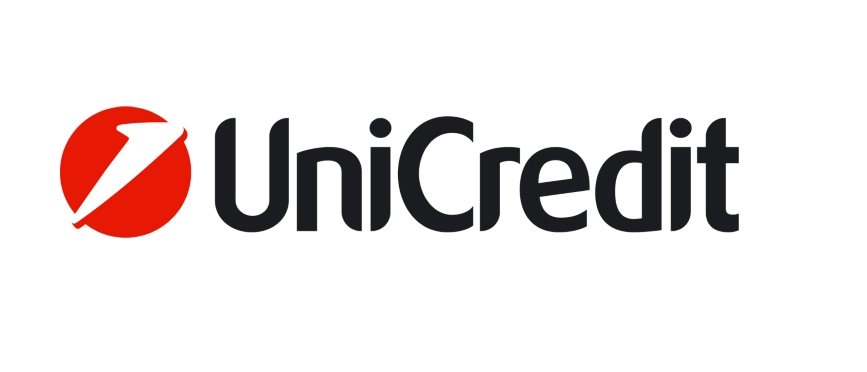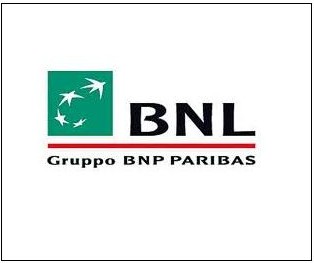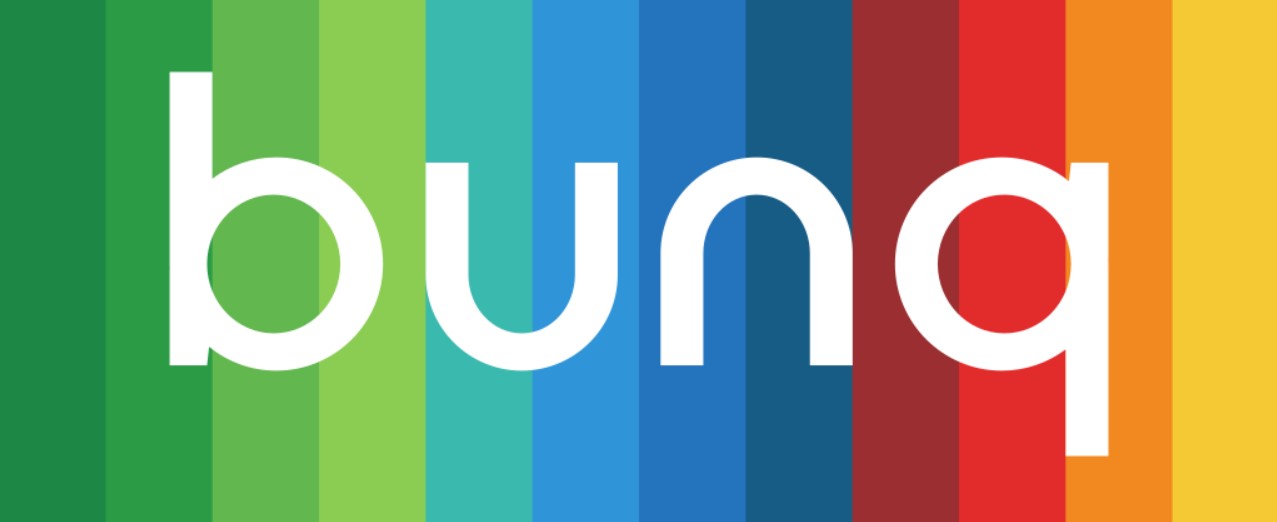 B. Collum, Unsplash
B. Collum, UnsplashA Comprehensive Guide to Opening an Italian Bank Account (Even For Non-Residents Online)

Jarrod Suda
Guide

A writer and editor at Monito, Jarrod is passionate about helping people apply today’s powerful finance technologies to their lives. He brings his background in international affairs and his experiences living in Japan to provide readers with comprehensive information that also acknowledges the local context.
Byron Mühlberg
Reviewer

Monito's Managing Editor, Byron has spent several years writing extensively about financial- and migration-related topics.
Links on this page, including products and brands featured on ‘Sponsored’ content, may earn us an affiliate commission. This does not affect the opinions and recommendations of our editors.
Read moreWith its breathtaking cities and iconic cuisine, it’s no wonder that over 90 million people visit Italy each year, many of whom stay as expats. Not only does it have a rich culture, but its fashion, tourism, and automobile industries continue to flourish.
However, Italian banks tend to place stricter requirements than their other European counterparts when opening bank accounts for non-residents. If you live in the country with a local address, then the process of opening a bank account in Italy will be relatively straightforward for you. For those who are planning to move there or have just arrived, we will walk you through the steps necessary to get you access to bank services.
In this guide, you will learn about the requirements to open a bank account as a foreigner, how to open a bank account in Italy online, as well as what your best options are every step of the way.
If you're looking for a low-cost bank account in the EEA, we recommend digital bank Revolut, which gives you EU bank details, a current account, and banking services like deposit protection up to €100,000 to customers residing in Italy. Revolut users in Italy get Lithuanian bank details and a debit card to spend in multiple currencies. It's also possible to open an account before arriving in Italy, but you must verify your address before receiving the debit card, and the services you receive may differ depending on the country you register from.
How to Open a Bank Account Online in Italy
- 01. What is banking like in Italy?
- 02. Option 1: Using a traditional Italian bank (Italian address needed)
- 03. Option 2: Using a digital bank (Italian address sometimes needed)
- 04. Option 3: Using Wise (Italian address not needed)
- 05. Option 4: Opening a basic bank account (Italian address needed)
- 06. How to send money to Italy
- 07. FAQ about banking in Italy
Key Facts About Banking in Italy
| 🏦 No. of Banks | ±448 |
|---|---|
| 👨⚖️ Regulatory Body | Banca d'Italia |
| 🏆 Best Bank for Residents | UniCredit |
| 💸 Best Money Transfer to Italy | It depends - compare now |
| 💻 Best Account for Non-Residents | |
| 💷 Average Running Costs | €4 - €6 /month |
What's Banking Like in Italy?
As an important member of the European System of Central Banks (ESCB), Italy operates in the Euro (€) and is home to regional banks, international banks like Deutsche Bank, Post Office banking, and even digital banks.
Foreigners may open a bank account in Italy, but the country’s high-street banks and regional banks almost always require their customers to enter a branch in person to open an account, which makes it very difficult to open an account while abroad. This is one of many reasons why digital banks that operate fully online, such as N26, have become popular among foreigners in Italy.
Types of Italian Bank Accounts
Italian residents and citizens have access to standard bank accounts and the convenient financial services that come along with them. The following types are universally offered and are the most common for clients in Italy:
- Current Account (conto corrente): As in other countries, this is the standard account that provides access to online payments, debit cards, and credit cards.
- Joint Account (conto corrente cointestato) – This is a current account that you share with someone else, such as your significant other or family member.
- Savings Account (conto di risparmio) – Current account holders often open this account to earn a little bit more interest on their money.
- Deposit Account (conto di deposito) – This is a less flexible type of savings account that will allow you to credit your pension or salary. It is not a checking account.
What Documents Do I Need to Open a Bank Account in Italy?
While the paperwork and requirements can differ slightly based on your bank, the following three documents will usually be requested to open a bank account in Italy:
- One valid form of photo ID: A passport, driver’s license, Italian residence permit, or an EU national identity card are all valid forms of photo ID.
- One valid proof of Italian address: A residence permit, utility bill, bank statement, or government document with your Italian residential address are acceptable forms of proof of address.
- An Italian tax code (codice fiscale): This is a form of Italian identification that is used for tax, business, and judicial purposes. EU and Schengen area residents can apply for one at any tax office (Agenzia delle Entrate) with their passport¹.
Other nationalities can apply for a codice fiscale at a tax office with one of the following:
- Entry stamp by Italy or another EU or Schengen country, no older than 3 months;
- Current visa issued by Italy or another EU or Schengen country;
- Written authorization prepared by a lawyer or accountant with your reason for requiring the Italian codice fiscale.
Option 1: Traditional Italian Banks
 Jarrod Suda
Jarrod SudaYou can generally expect to pay maintenance fees of around €4 per month to manage a basic current account package and bank card. In contrast, other packages that include cheques, overdrafts, bank transfers, and access to banking representatives may range from €8 to €17 per month.
Can a Foreigner Open a Bank Account In Italy?
Opening a bank account in Italy can be done online if you are a legal resident, but banks will require others to go in person to a local bank branch to open an account. Not many Italian banks offer banking services officially in English, making it potentially tricky for those who do not speak the local language.
Fortunately for expats from other parts of Europe, most major Italian banks charge no or very low transfer fees on bank transfers to and from other EU/EEA countries. (However — even if they don't make it explicit — you could still be charged an exchange rate margin whenever you transfer to another currency, and that's why we recommend comparing services on Monito to find the cheapest money transfer provider and save money instead.)
High-street Italian banks are well-suited for the following types of customers:
- New arrivals who already have proof of residence at an Italian address;
- Foreigners looking for fully-fledged financial services (e.g., overdrafts, investments, credit cards, etc.) don't mind paying more fees for them.
Let's take a look at some of the major banks in Italy that may be relevant for foreigners:
UniCredit
Headquartered in Milan with over 8,500 branches around the world, UniCredit offers the following types of current accounts to customers in Italy:
- My Genius Current Account: You can apply for an account online, and you'll get a contactless Visa debit card, access to online banking, and free SEPA transfers. UniCredit charges a flat fee of €4 per month to maintain your account. You must be a resident of the Republic of Italy and have an Italian phone number.
- UniCredit Base Account: This account only offers essential banking services, such as debit cards, cash withdrawals, and SEPA transfers. This account is available for legal residents of the European Union and Schengen area. It has an annual fee of €48, and you must physically go to a local branch to open your account.
Banca Nazionale del Lavoro (BNL)
BNL, a subsidiary of BNP Paribas since 2006, is Italy's sixth-largest bank. They offer several kinds of current accounts, each with their unique benefits to fit your needs:
- Smart Module: This standard current account, branded as BNL's "Smart Module", allows you to customize your banking services to only pay for what you use. The €6 monthly fee will be waived if you are under 30. You can open an account online with a passport from an EU or Schengen country and an Italian health insurance card.
- Basic Account: With this account, you can access BNL's debit card and free cash withdrawals from BNL ATMs. With a €4 a month fee, you can make and receive SEPA transfers within the European Union with this account. You do not have to be a resident of Italy, but you must speak with a representative at a local branch to open one.
- Full Module: This current account gives you access to their debit and credit cards, a mobile app to make and receive transfers, and even access to online stock trading. The account is maintained at €17 per month, although BNL offers loyalty discounts to reduce that fee. You must have a passport from an EU or Schengen country and have an Italian health insurance card to open an account online.
Intesa Sanpaolo
Italy's largest bank by total assets and over 4,500 branches in Italy, Intesa Sanpaolo offers two types of bank account services to customers in Italy:
- XME Account: With Intesa Sanpaolo's current account for €7.50 per month, you'll get your choice of a Visa or Mastercard debit card, access to online banking, and use of their mobile app. You can apply for an account online if you have a passport from an EU or Schengen country and an Italian tax code.
- Basic Account: This account provides limited online banking services and full access to essential banking services, such as SEPA transfers, ATM withdrawals, and a debit card. It has a €30 annual fee and can be opened by any resident of the EU or Schengen area. You must physically go to a local branch to open your account.
Option 2: Digital Banks
 Jarrod Suda
Jarrod SudaDigital banks have been rising across much of Europe, offering lower fees, operating without branches, and designing a more convenient user experience than their high-street competitors.
Can You Open an Italian Bank Account Online?
Yes, digital banks take the hassle out of brick-and-mortar banking. Some digital banks are fintechs without a full banking license but offer services at a fraction of the price and over a user-friendly web or mobile app interface. Others are fully-fledged banks providing all or most of the usual banking services like overdrafts, investments, and credit cards. Due to their flexibility and lower costs, digital banks are best for the following customers:
- Those who only require the standard range of banking services (e.g. current account, card, etc.),
- Those who are looking to save money,
- For those without proof of residence in Italy, we recommend N26 or bunq, which don't require it for registration.
In the digital bank category, let's take a look at some of the major non-resident Italian bank account banks ideal for foreigners:
N26
One of Europe's best-known mobile-only banks, N26 is a widely-used and much-loved challenger bank with 7 million customers in Italy and across the Eurozone, the US, and Brazil. Moreover, N26 is also partnered with transfer service Wise, allowing in-app international money transfers at some of the best exchange rates on the market.
N26 requires an EU proof of residence to open an account and offers customers the following three types of accounts in Italy:
- N26 Standard: A current account available online and in the N26 app that allows mobile payments and includes a see-through debit card for a €10 delivery fee. The account costs €0 per month.
- N26 Smart: The upgraded current account allows one extra debit card, spending statistics, and phone support. The account costs €4.90 per month.
- N26 Metal: A premium tier account option with travel and lifestyle insurance, bespoke rewards, and unlimited free ATM withdrawals. The account costs €16.90 per month.
bunq
Amsterdam-based bunq is a rapidly expanding European challenger bank that has become a popular alternative to high-street and traditional Italian banks. The bank is well-known for its slick user interface and flexible features geared toward young people, travellers, and others frequently on the move.
Like N26, all of bunq's bank accounts are integrated with Wise, making international money transfers very cheap. The bank offers the following three current account options to customers across the EU:
- Easy Bank: A low-cost current account with a Dutch, French, or German IBAN, debit Mastercard, and money transfer capabilities. The account costs €2.99 per month.
- Easy Money: An account with added features and functionalities, including spending statistics, four free ATM withdrawals per month, budgeting features, unique deals, a metal debit card, and bookkeeping software. The account costs €8.99 per month.
- Easy Green: A premium tier, Easy Green's unique feature allows users to track the progress of the reforestation initiative linked to other tiers (i.e. a tree planted for every €100 spent). Costing €17.99 per month, we've found in our bunq review that this initiative is not worth it for most users.
Hype
A fully registered bank registered with the Bank of Italy, Hype is a digital bank that offers its services exclusively to residents of Italy in the Italian language. You can open an account online if you provide an Italian identity card, passport, driver's license, or health insurance card.
The digital bank offers three kinds of accounts to customers across Italy:
- Hype Start: An account with an Italian IBAN that comes with a contactless prepaid card, typical money transfer services, a Bitcoin wallet, investment options, and loans up to €25,000. The account has zero up-front costs.
- Hype Next: An account with added features, including a Mastercard debit card, access to a desktop application, and expanded investment options. The account costs €2.90 per month.
- Hype Premium: A premium account that includes a World Elite Mastercard debit card, commission-free cash withdrawals from anywhere in the world in any currency, travel insurance, and dedicated assistance via WhatsApp. The account costs €9.90 per month.
Revolut
Arguably the world's most widely-known name in the fintech sphere, Revolut UAB is a licensed bank in Italy that has stood at the forefront of Europe's low-cost online financial services sector in recent years. With over 12 million users, the London-based fintech is available not only in the UK and the EEA but worldwide, including Australia, Canada, Singapore, Switzerland, Japan, and the US.
Here's a complete overview of Revolut's different account offerings:
Account Name | Fee /Month |
|---|---|
€0.00 | |
€3.99 | |
€8.99 | |
€15.99 | |
€50.00 |
Option 3: Wise
 Jarrod Suda
Jarrod SudaAnother non-resident Italian bank account option is Wise's Multi-Currency Account. Alongside its debit Mastercard and unique bank details given to you, Wise allows users to pay and be paid like a local in Italy and across the Eurozone.
Fortunately, after opening your account online, you'll only be required to verify your identity through their interface, and you won't need to show proof of residence in Italy to sign up and access the service. Wise's streamlined sign-up process makes it ideal for foreigners. (You must show proof of residence in the EU/EEA, US, Singapore, Japan, Australia, or New Zealand to sign up).
Here's what Wise has to say about opening an account without proof of residence in the UK, although the same applies in Italy:
"You can then choose to either supply proof of address from a standard list of documents, or to send in a selfie, in which you’re holding your proof of ID. This can be a great alternative if you’re still waiting to move to the UK or haven’t yet got bills and other paperwork registered in your name."
Product Features
Once you're signed up and your card has arrived (which takes up to 2 weeks in Europe), you'll be able to take advantage of the following unique features with the Wise Multi-Currency Account:
- Local bank details in the US, Eurozone, UK, Australia, New Zealand, Singapore, Romania, Canada, Hungary, and Turkey;
- Hold, exchange, and top-up up to 56 currencies;
- A multi-currency Mastercard debit card that's handy for paying in foreign currencies without the hidden fees;
- Access to Wise's powerful international money transfer service right from your account balance.
Foreigners Transferring to Euros in Italy
To get a sense of just how useful Wise can be for expats, let's say that you've just moved from the US to Italy and you'd like to spend in Euros before you've registered as a resident. With the Wise Multi-Currency Account, you'll be able to:
- Send US dollars from your bank account to your Wise Euro account;
- Convert to Euros at a low fee (e.g. if you convert $1,000 to Euros, the total fee will be around 0.64% or $6.40);
- Pay with your Wise debit card, make or receive SEPA (and SWIFT) payments, and set up direct debits.
- You'll also have a dedicated set of Belgian bank details to share with an employer. Belgian IBANs are fully eligible in Italy and across the Eurozone, and rejecting the payout or receipt of funds based on the origin of an IBAN is illegal. Note that this account does not offer an overdraft, and you won’t earn interest on any in-credit balances.
Option 4: Basic Bank Accounts
The most standard non-resident Italian bank account option (offered by all traditional Italian banks) is a basic account (known as il conto di base or conto corrente non residenti). They offer basic banking services for free or at a low cost for foreigners and is available so long as the applicant is an Italian or EU resident. This means that both EU nationals and holders of EU visas (including those with refugee status) are eligible to open one.
- Basic Account (conto di base): Italian banks are required by law to provide legal residents of the European Union or the Schengen area with access to basic bank accounts. Their services include SEPA transfers, debit cards, and cash withdrawals. Foreigners who are not legal residents of the EU or do not have an EU passport may have to consider opening a non-resident bank account (conto corrente non residenti) instead.
- Non-Resident Bank Account (conto corrente non residenti): The banking services that will be provided to you will change depending on the bank you choose. Some banks offer online banking, chequebooks, and credit cards while others will only allow you to receive, send, and withdraw money. Italian banks must follow several compliance requirements when opening such an account so they will most likely require you to visit a branch in person to assess your financial situation. However, if you intend on using a financial service that is clearly profitable for them (such as borrowing a mortgage from them), then they will be much more likely to open an account for you².
Standard Financial Services for Foreigners
In Italy, they will require you to open an account in person at a local branch with proof of identity and a proof of address. You must also not have another current account with a bank in Italy. Basic accounts are offered by all major Italian banks and typically include the following day-to-day financial services:
- Deposit Processing: Top-up money into your bank account.
- Withdrawals: Withdraw cash at ATMs.
- Direct Debits: Set up recurring payments where funds are automatically dedicated from your bank account.
- Payment Card: Use a bank card to make cashless payments and withdraw money.
Following EU law, basic payment accounts are also insured of up to €100,000 in deposits for individual accounts and €200,000 in deposits for joint accounts, making them a very secure option. Banks in the EU cannot refuse EU residents from opening an account in another country solely based on not living there³.
What Are The Best Banks In Italy For Foreigners?
Choosing the best Italian bank account will depend on your needs and preferences. To get a better picture of how the different provider types compare to each other, take a look at the comparison below:
 |  |  |  |  |  | |
Bank | ||||||
Provider Type | Bank | Bank | Neobank | Neobank | Neobank | Neobank |
Account Type | Current account | Current account | Current account | Current account | Current account | Multi-currency account |
Card Type | Mastercard credit + debit | Visa credit + debit | Mastercard debit | Mastercard/Maestro credit | Mastercard debit | Visa debit |
Language(s) | Italian, English | Italian | English, Italian and 3 others | English, Italian and 5 others | English, Italian and 19 others | English, Italian and 14 others |
Currencies | EUR | EUR | EUR | EUR | EUR and 30+ others | EUR and 50+ others |
Monthly Fee | 4 | 6 | 0 | 2.99 | 0 | 0 |
Italian Residence Requirement | ✔️ | ✔️ | ✘ | ✘ | ✘ | ✘ |
Ideal For | English-speakers looking for a fully-fledged bank account with multiple services. | Italian-speakers looking for a fully-fledged bank account with multiple services. | EU residents looking for a low-cost fully-fledged bank account. | Non-residents in Italy looking for a basic but flexible and eco-friendly current account and card offering. | Residents and non-residents in Italy looking for access to basic banking services at a very low cost. | New arrivals in Italy looking to spend and withdraw cash before acquiring a local bank account. |
| See More | See More | Try N26 | Try bunq | Try Revolut | Try Wise |
Last updated: 18/07/2022
How to Send Money to Italy
 Jarrod Suda
Jarrod SudaOnce you've learned how to open a bank account in Italy, you'll need to consider how to send your money across, a process that can be especially costly if you are depositing money from a currency other than Euros. To deposit money into your new Italian Euro account from your home currency before you move, you'll need to go to your online banking and choose between one of two options:
- Sending a wire transfer through your bank directly;
- Sending a bank transfer via a money transfer specialist.
In general, we don't recommend using your bank to transfer money internationally, as the fees can be exorbitant and the waiting times can be lengthy. This is mainly because banks wire funds over the SWIFT network, which adds many timely and expensive steps to the money transfer process.
Use an Online Money Transfer Service
Whether the amount you'd like to send to Italy is small or in the order of several thousand Euros, then we recommend you use a money transfer specialist service (Wise is one among many.) To compare which services are cheapest for your transfer amount and home country to Italy, run a search on Monito's real-time comparison engine below.
Use a Foreign Exchange Broker
If you're moving large amounts from your home currency to your Italian account, (i.e. anything upwards of €30,000 or equivalent), then services such as Wise may not be your cheapest bet. Instead, we recommend exploring your options among the foreign exchange brokers that support transfers from your country to Italy. These services specialise in negotiating favourable exchange rates on your behalf and are the most cost-effective option for transferring large sums of money (such as life savings or liquid investments) across borders.
By analysing tens of thousands of searches on Monito's comparison engine over the course of 2021, we found that, on average, Wise, XE Money Transfer, and Instarem (for transfers from the United States) tend to offer the cheapest transfers to Italy for small- and medium-sized transfer amounts. For large transfers (defined here as €43,000 or above), Wise and XE Money Transfer still tend to be the most cost-effective services.
FAQ About Banking in Italy
📝 Can I open a bank account in Italy without an Italian proof of residence?
In a majority of cases, customers must be legal, documented residents of Italy to open a standard current bank account in the country. Legal residents of the EU and Schengen area may open a basic bank account without Italian residence, but they will be required to show proof of residence in their home country. For other nationalities, digital banks like N26 and bank-like accounts such as Wise's Multi-Currency Account are recommended because they offer many standard banking services without requiring much paperwork.
🏛 What do you need to open a bank account in Italy?
To open a basic account, you will need to be a legal resident of the EU and provide one form of identification and one proof of Italian address. To open a current account that has more banking features, your bank may require you to have legal residence in Italy and an Italian tax code. If you opt to open an account with a digital bank like N26, you will only have to be a resident of any country supported by N26.
💻 Can I open a bank account in Italy online?
If you are a legal resident of Italy who is physically present at an Italian address, then most banks will allow you to open a bank account with their online platforms. If you would like to open a basic account, or if you do not have enough documentation, then banks may require you to speak in person with a representative at a local branch to confirm your identity and assess your financial situation.
🌍 Can foreigners open a bank account in Italy?
Yes, foreigners can open a bank account in Italy, but they'll generally need to show an Italian tax code (codice fiscale) for tax purposes, as well as a valid ID and proof of address (which doesn't need to be in Italy).
Other Banking Guides for Non-Residents



















References Used in the Article
1. Studio Legale Metta. Italian Tax Code. 3 August 2021
2. Studio Legale Metta. Italian Bank Account: Requirements. 22 August 2020.
3. Economia Pertutti. The Basic Account. Accessed 15 November 2021.
Why You Can Trust Us
You’re probably all too familiar with the often outrageous cost of sending money abroad. After facing this frustration themselves back in 2013, Monito co-founders François, Laurent, and Pascal launched a real-time comparison engine to compare the best money transfer services worldwide.
Today, Monito’s award-winning comparisons, reviews, and guides (no longer just about money transfers but also digital accounts, travel cards, eSIMs, and travel insurance) are trusted by millions each year. Our recommendations are backed by our comparison data and dozens of expert tests, allowing you to confidently make the savviest decisions.
15+ million people across the globe trust Monito.
Monito's experts spend hours researching and testing services
Commissions we may receive never impact our independence.





